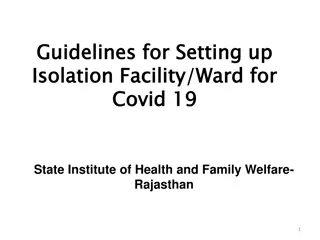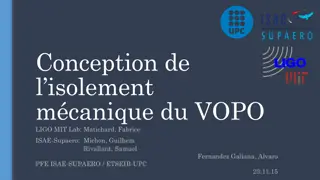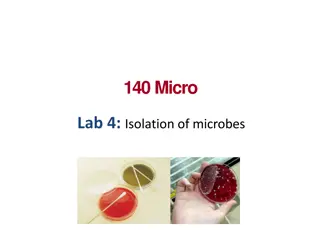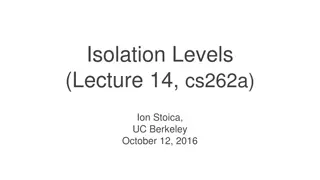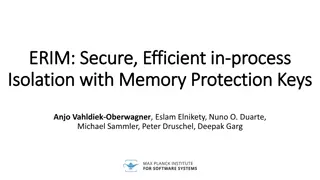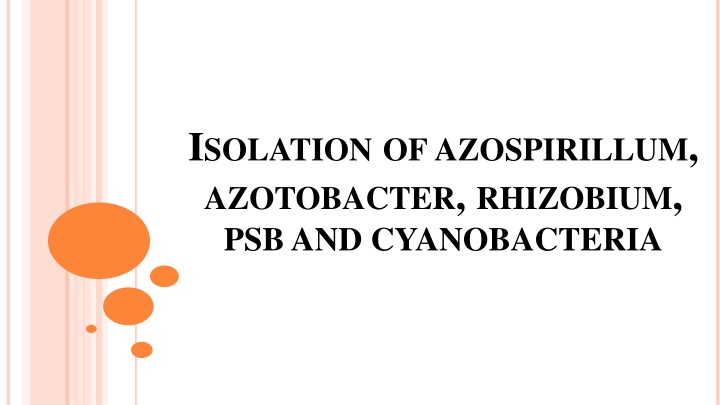
Isolation and Production of Biofertilizers from Azospirillum, Azotobacter, Rhizobium, PSB, and Cyanobacteria
Discover the process of isolating Azospirillum, Azotobacter, Rhizobium, PSB, and Cyanobacteria for biofertilizer production. Learn about the stages involved, from sample collection to isolation techniques. Explore the methods used, such as nitrogen-free enrichment medium and Congo Red medium. Uncover the steps for isolating each type of bacteria and their importance in enhancing soil fertility.
Download Presentation

Please find below an Image/Link to download the presentation.
The content on the website is provided AS IS for your information and personal use only. It may not be sold, licensed, or shared on other websites without obtaining consent from the author. If you encounter any issues during the download, it is possible that the publisher has removed the file from their server.
You are allowed to download the files provided on this website for personal or commercial use, subject to the condition that they are used lawfully. All files are the property of their respective owners.
The content on the website is provided AS IS for your information and personal use only. It may not be sold, licensed, or shared on other websites without obtaining consent from the author.
E N D
Presentation Transcript
ISOLATION OF AZOSPIRILLUM, AZOTOBACTER, RHIZOBIUM, PSB AND CYANOBACTERIA
ISOLATION OF AZOTOBACTER Samples were withdrawn at a depth of 10 15 cm below the surface, collected into sterile vials and then Azotobacter is isolated on Jensen s medium
ISOLATION OF AZOSPIRILLUM Nitrogen-free semisolid malate (NFb) enrichment medium, and Rojo Congo (Congo red; RC), an isolation medium were used for isolation of Azospirillum.
ISOLATION OFRHIZOBIUM RHIZOBIUM IS ISOLATED ON CONGO REDMEDIUM The Rhizobium from the freshly crushed root nodule was Gram stained onto a slide and examined at 100X power with oil immersion. The bacteria cells were rods in chains, and clumps that stained Gram negative as indicated by the faint pink red colour of the rod membrane walls.
ISOLATION OF PSB Soils collected from different places and sediment samples of soil is collected by sediment sampler (Peterson crab), it was sterilized alcohol. The central portion of the top 2 cm sediment samples was taken out with the help of a sterile spatula. The samples were then transferred to a sterile polythene bag andtransported. The serially diluted samples were plated on Pikovskaya s agar media to isolate the phosphate solubilizing bacteria. The plates were incubated at 28 2 C. with
ISOLATION OF CYNOBACTERIA The number of heterotrophic bacteria present on the surface of a membrane filter then was determined by placing each filter into 10 ml of sterile dilution buffer (HEPES, 1.2 g/liter; NaNO3, 1.5 g/liter; pH 7.5) and dispersing the cells by treatment for 3 min in an ultrasonic cleaning bath (model B-220; Branson). Serial dilutions of the resulting cell suspensions were prepared and plated in duplicate on BG-12 medium supplemented with glucose (1.0 g/liter), nutrient broth (Difco; 0.8 g/liter), and cycloheximide. After incubation in the dark at 25 C under ambient atmosphere for 1 week, the bacterial colonies present on the plates were counted with a colony counter (American Optical).



